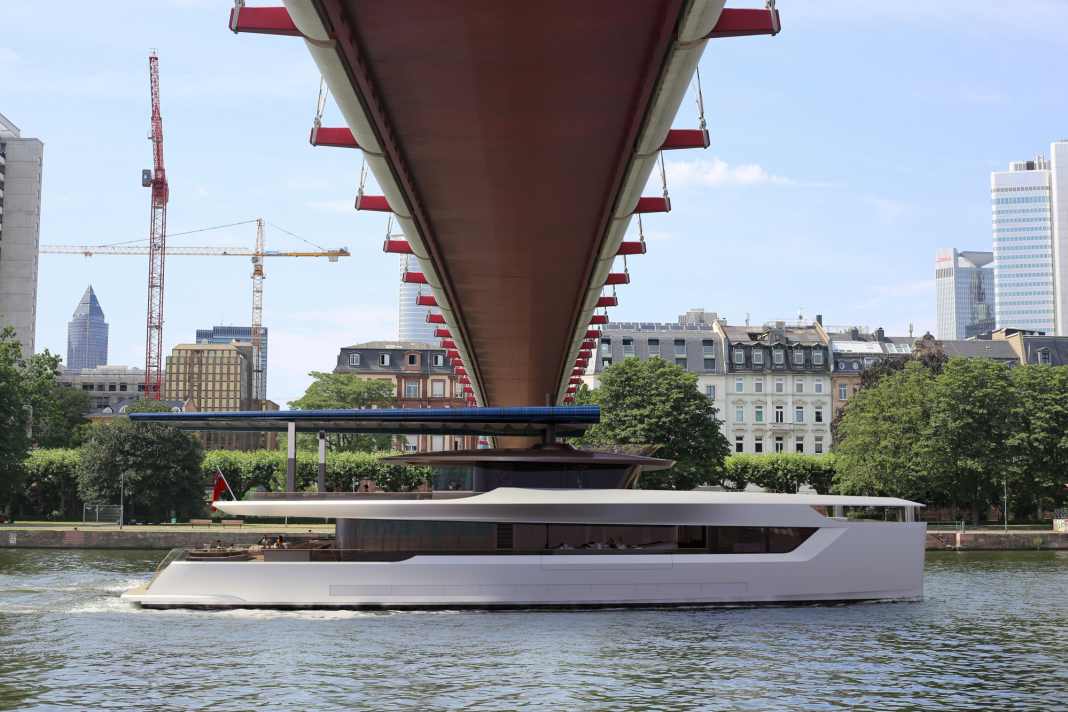Project "Dragonfly": Dixon catamaran with tiltable wing sails - motorised glider of the future?
Sören Gehlhaus
· 15.10.2025






Motorised gliders have been bringing two worlds together for decades. In most cases, the sails act as a supplement to the main combustion engine. The team from Dixon Yacht Design wants to turn this around with the "Dragonfly" superyacht concept: more propulsion through wind power, less engine time. The almost 40 metre long and 18.50 metre wide catamaran has natural advantages in terms of volume and surface area, even if it is not recognisable as such from some perspectives.
Two parallel wing sails working side by side are intended to reduce complexity and maximise comfort during operation of the aluminium construction. They stand freely on the top deck and allow for sheer surfaces underneath: The decks remain free of stays, ropes or winches. The sail handling should bring the sailing and motoring worlds closer together.
It should be simple: Press the button and within ten seconds you are sailing under semi-rigid sails, which are then automatically trimmed and further reduce the low heeling values typical of multihulls. At rest, the wings move freely with the wind. Two electric motors, which generate energy by turning the propellers while sailing, are designed to push through calm conditions.
Iain Percey awards wing sails
For propulsion, Bill Dixon and his team used an existing sail and mast system from Rondal, Aero Wing Sails known from Royal Huisman's project "Aera". The Dutch company developed the wing sail in close collaboration with Dr Iain Percy, CEO and founder of Artemis Technologies. As in the SailGP, he favours wing sails made of lightweight, aircraft-like materials that can rotate completely around the vertical axis.
The profile can be changed using trim tabs to control the performance of the wings. For depowering, these flaps can twist and twist at the upper end to generate righting moment. In addition to the well-known efficiency benefits, Percy also emphasised to YACHT that the semi-rigid profiles are less prone to wear as they do not flutter. This would make them low-maintenance and cost-effective, as fewer components mean less wear and tear and no need to replace the sails after just a few years.
Iain Percy heads the spin-off of the America's Cup campaign Artemis Racing, which is committed to decarbonisation in all areas and is itself Pilot boats fly. Percy is an Olympic champion in the Finn Dinghy (2008) and Starboat (2008) as well as a silver medallist in the Starboat (2012) and multiple world champion. He is also a veteran of four America's Cup challenges.
Clearance heights of bridges? No problem
For the Aero Wing Sail, Artemis and Rondal devised a mast-laying device, as the resurgent technology is initially aimed at owners of large yacht projects. And since they are travelling the world and want to explore a lot, both wing masts tilt down to a good twelve metres clearance height and are supported by telescopic pylons. At midday, the optional solar panels on the masts come into their own and generate electricity.
Sophisticated room concept
Dixon developed the layout together with the British studio Michael Leach Design, which has extensive experience in designing large superyacht catamarans. The large saloon on the main deck connects seamlessly with the aft deck and cockpit areas. The tenders are stored amidships so as not to detract from the aesthetics. A multi-levelled bathing platform provides easy access to the water.
The accommodation in the foredeck can be configured as a single owner's suite or as two VIP cabins with a sliding wall between them. There is direct access to the foredeck from here. Four spacious guest cabins are located in the hull, while the crew quarters, mess and utility rooms are located in the forward area. The upper deck has an unusually open design and offers views to the front and rear. Sliding glass elements offer protection from the wind when the yacht is at anchor.
Technical data "Dragonfly"
- Lüa: 39,98 m
- LWL: 39,24 m
- Width: 18,54 m
- Material: Aluminium
- Gross tonnage: 499 Gross Tons
- Guests: 5/6
- Crew: 4
- Construction: Dixon Yacht Design
- Exterior design: Dixon Yacht Design
- Interior design: Michael Leach Design (LSK Design)

